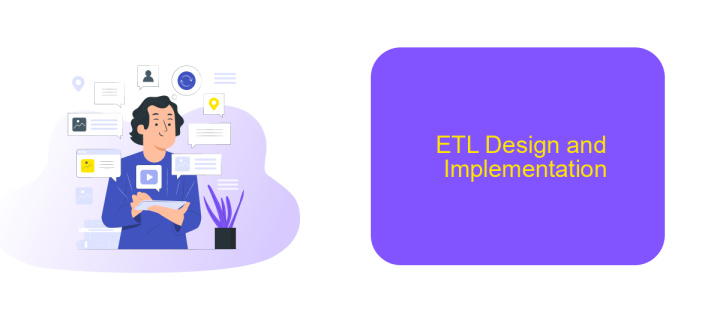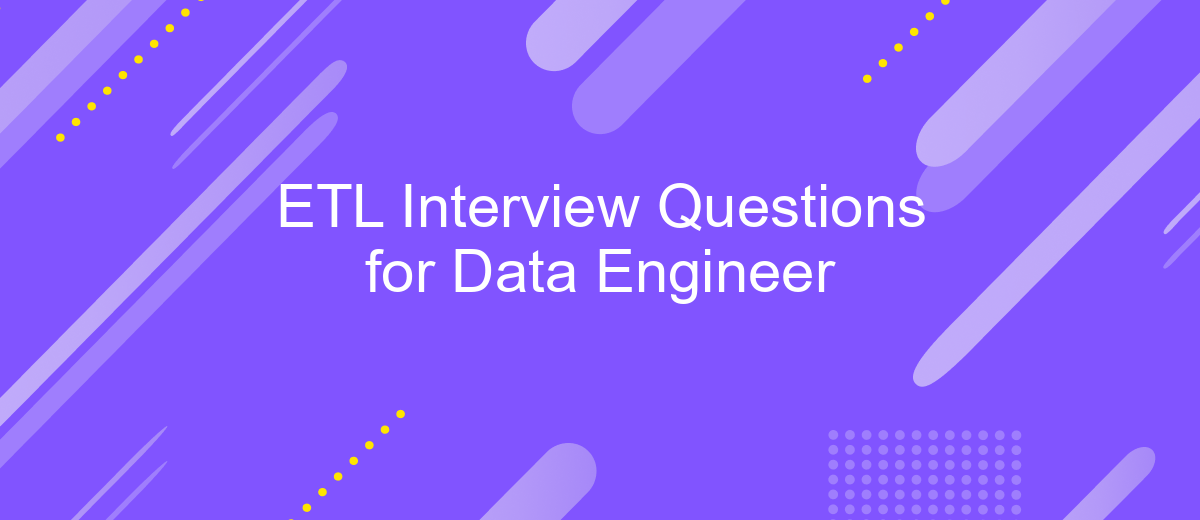ETL Interview Questions for Data Engineer
Preparing for an ETL (Extract, Transform, Load) interview as a Data Engineer can be a challenging yet rewarding experience. This article aims to guide you through some of the most commonly asked ETL interview questions, helping you to understand the key concepts and techniques essential for success in this critical role within data management and analytics.
Introduction
In the rapidly evolving field of data engineering, mastering ETL (Extract, Transform, Load) processes is crucial for any aspiring professional. ETL plays a vital role in data integration, enabling seamless data flow from multiple sources to a centralized repository. As companies increasingly rely on data-driven decision-making, the demand for skilled data engineers who can efficiently manage ETL workflows continues to grow.
- Understanding the fundamentals of ETL processes
- Proficiency in ETL tools and technologies
- Experience with data integration platforms like ApiX-Drive
- Knowledge of data warehousing and database management
- Problem-solving skills for troubleshooting data issues
Preparing for an ETL interview requires a solid grasp of these key areas. This guide aims to equip you with the essential ETL interview questions and answers that will help you demonstrate your expertise and stand out to potential employers. Whether you're a seasoned professional or just starting your career, understanding these concepts will enhance your ability to design, implement, and optimize ETL processes effectively.
ETL Concepts

ETL, which stands for Extract, Transform, Load, is a crucial process in data engineering. It involves extracting data from various sources, transforming it into a suitable format, and loading it into a data warehouse or database. This process ensures that data is clean, consistent, and ready for analysis. Understanding ETL concepts is essential for any data engineer, as it forms the backbone of data integration and processing workflows.
Modern ETL tools and services, like ApiX-Drive, simplify the integration process by providing user-friendly interfaces and automated workflows. ApiX-Drive, for instance, allows seamless connection between various data sources and destinations, enabling efficient data extraction and transformation. By leveraging such tools, data engineers can focus more on data analysis and less on the complexities of integration, ensuring timely and accurate data delivery for business intelligence and decision-making.
ETL Tools and Techniques

ETL (Extract, Transform, Load) tools and techniques are essential for data engineers to efficiently manage data workflows. These tools help in extracting data from various sources, transforming it into a suitable format, and loading it into a target data warehouse or database.
- Apache NiFi: A robust data integration tool that supports real-time data ingestion and transformation.
- Talend: Offers a comprehensive suite for data integration, data management, and data quality.
- Apache Spark: A powerful analytics engine for big data processing, capable of handling ETL tasks efficiently.
- Informatica PowerCenter: A widely-used enterprise data integration platform known for its reliability and scalability.
- ApiX-Drive: A service that simplifies the process of integrating various applications and automating data workflows without coding.
Choosing the right ETL tool depends on your specific needs, such as data volume, complexity of transformations, and integration requirements. Tools like ApiX-Drive can be particularly useful for automating data workflows and integrating multiple applications seamlessly. By leveraging these ETL tools and techniques, data engineers can ensure efficient data processing and maintain high data quality.
ETL Design and Implementation

Designing and implementing an ETL (Extract, Transform, Load) process is crucial for data engineers to ensure seamless data flow from source systems to data warehouses. The design phase involves understanding the data sources, defining the transformation logic, and determining the target storage architecture. Efficient ETL design can significantly impact data quality, performance, and maintenance.
Implementation of ETL processes requires selecting appropriate tools and technologies that align with the organization's needs. Popular ETL tools include Apache NiFi, Talend, and Informatica. These tools provide robust functionalities for data extraction, transformation, and loading, ensuring data consistency and integrity throughout the pipeline.
- Identify data sources and their formats (e.g., CSV, JSON, databases).
- Define transformation rules and data cleansing procedures.
- Select and configure ETL tools for automation.
- Monitor and optimize ETL processes for performance and reliability.
For seamless integration and automation, services like ApiX-Drive can be utilized. ApiX-Drive allows easy connection between various applications and data sources, automating the data transfer process. This reduces manual intervention and ensures that the ETL pipeline is efficient and scalable. Proper design and implementation of ETL processes are essential for reliable data management and analytics.


Best Practices and Interview Tips
When preparing for an ETL interview, it is crucial to understand the fundamental concepts and tools related to data extraction, transformation, and loading. Make sure to familiarize yourself with the ETL process, various data warehousing solutions, and popular ETL tools like Apache NiFi, Talend, and Informatica. Practice common ETL scenarios and be ready to discuss your experience with managing data pipelines, handling data quality issues, and optimizing ETL performance.
During the interview, demonstrate your problem-solving skills by explaining how you would approach real-world ETL challenges. Highlight your ability to work with different data sources and your experience with integration services such as ApiX-Drive, which can streamline the process of connecting various applications and automating data workflows. Be prepared to discuss best practices for maintaining data integrity, ensuring data security, and monitoring ETL processes. Additionally, showcase your knowledge of SQL, scripting languages, and cloud platforms to further strengthen your candidacy.
FAQ
What is ETL, and why is it important in data engineering?
What are the common challenges faced during the ETL process?
How can you optimize ETL processes to handle large datasets efficiently?
What is the difference between ETL and ELT?
How do you ensure data quality in an ETL process?
Strive to take your business to the next level, achieve your goals faster and more efficiently? Apix-Drive is your reliable assistant for these tasks. An online service and application connector will help you automate key business processes and get rid of the routine. You and your employees will free up time for important core tasks. Try Apix-Drive features for free to see the effectiveness of the online connector for yourself.

